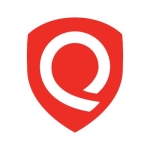What is our primary use case?
The main purpose for using Rapid7 InsightVM is vulnerability management and visibility.
What is most valuable?
The cost is what is most valuable. Compared to the other products on the market, the cost is more palatable. Also the functionality.
It is a single pane of glass that I can do most things.
What needs improvement?
I see ongoing progress constantly. There isn't much opportunity to make recommendations for improvement from our end. Technology does what we want it to do.
The only issue I have with their business plan is how they interact with South African enterprises.
They have one singular distributor that I must work with, and that is where my two points go.
I can't interact with Rapid7 directly. I must work via the local incumbent, the distributor. And working with this third party can be tiresome at times.
Rapid7 InsightVM doesn't work with us directly. I have to work with a distributor. If I need quotes or technical support, for example, I have to work with the distributor rather than Rapid7 InsightVM directly.
We are a registered reseller and a trusted partner. However, for us to get any support from them I can't log a call directly with Rapid7 InsightVM. I have to work with the distributor to log the call for me.
For how long have I used the solution?
I have been working with Rapid7 InsightVM for two to three years.
We are using the latest version.
What do I think about the stability of the solution?
Rapid7 InsightVM is very stable. I would rate the stability a five out of five.
What do I think about the scalability of the solution?
Rapid7 InsightVM is a scalable product. I would rate the scalability a five out of five.
We have approximately 1, 500 endpoints in our company.
It's not users, but endpoints, because the model is built around the endpoints you want to monitor. We run on around 1,500 endpoints. It is not user-specific.
One person can easily manage this solution, but we have a team of four engineers to manage our environment.
How are customer service and support?
I have not contacted technical support directly.
Which solution did I use previously and why did I switch?
We also use Tenable Nessus.
How was the initial setup?
I am not involved with the initial setup. I have a support team that is managing that.
We deploy it depending on our client's requirements. We use it as well as our clients.
What about the implementation team?
The deployment was done in-house. We do it ourselves.
We had four, and all four worked on the project. This is not to say that there is just one primary job or four main jobs. Our engineers all work as a team.
What was our ROI?
I can definitely see a return on investment.
It's good. We get the value from the product.
What's my experience with pricing, setup cost, and licensing?
We purchase annual licenses.
We provide our own support. We have resources that have been certified to work on the product. It is purely the license fee.
In terms of affordability, I would rate it a three out of five.
What other advice do I have?
I believe they see us as resellers because we resell it, but when we use it for professional services, they regard us as partners. They use both terms in the same sentence.
We support it.
I strongly recommend it. It's a good product.
It's only the backend support that needs to be improved. However, there isn't very much that has room for improvement in the product right now.
They are not flawless. We have had problems here and there, but overall, I would rate Rapid7 InsightVM an eight out of ten.
Which deployment model are you using for this solution?
Public Cloud
If public cloud, private cloud, or hybrid cloud, which cloud provider do you use?
Amazon Web Services (AWS)
Disclosure: My company has a business relationship with this vendor other than being a customer. Reseller



















